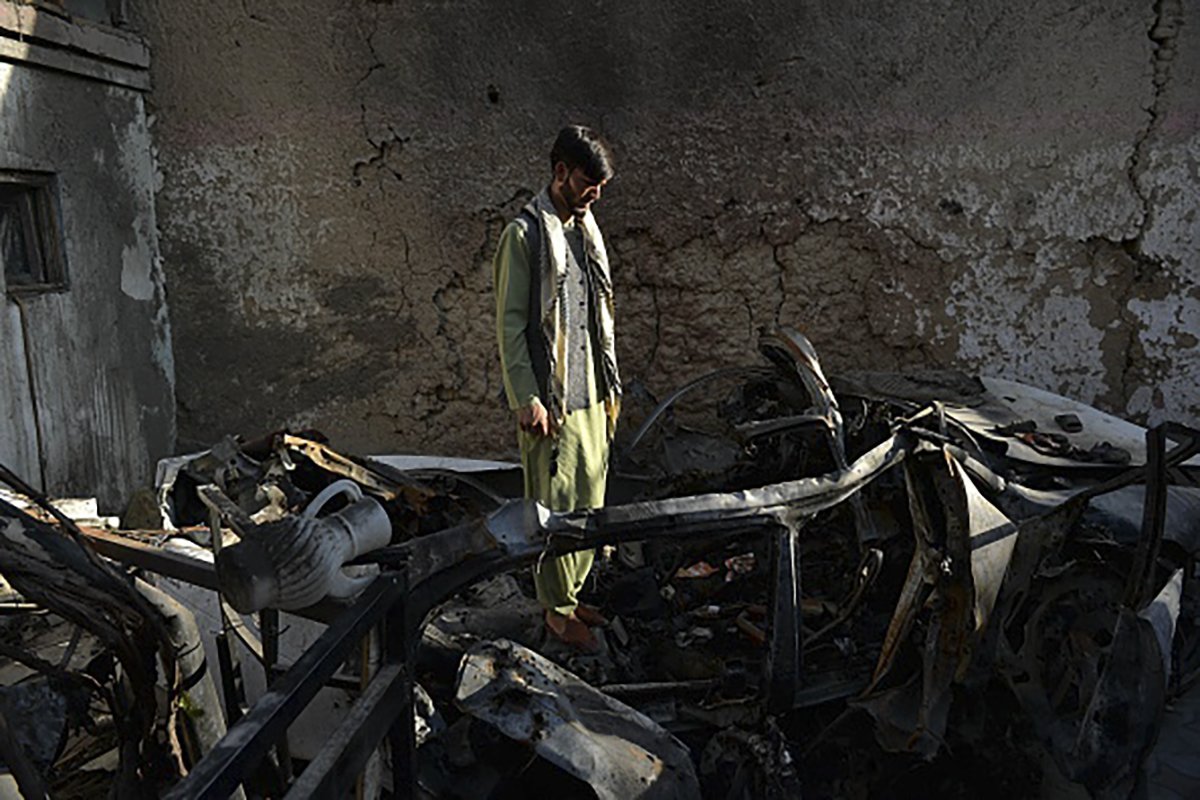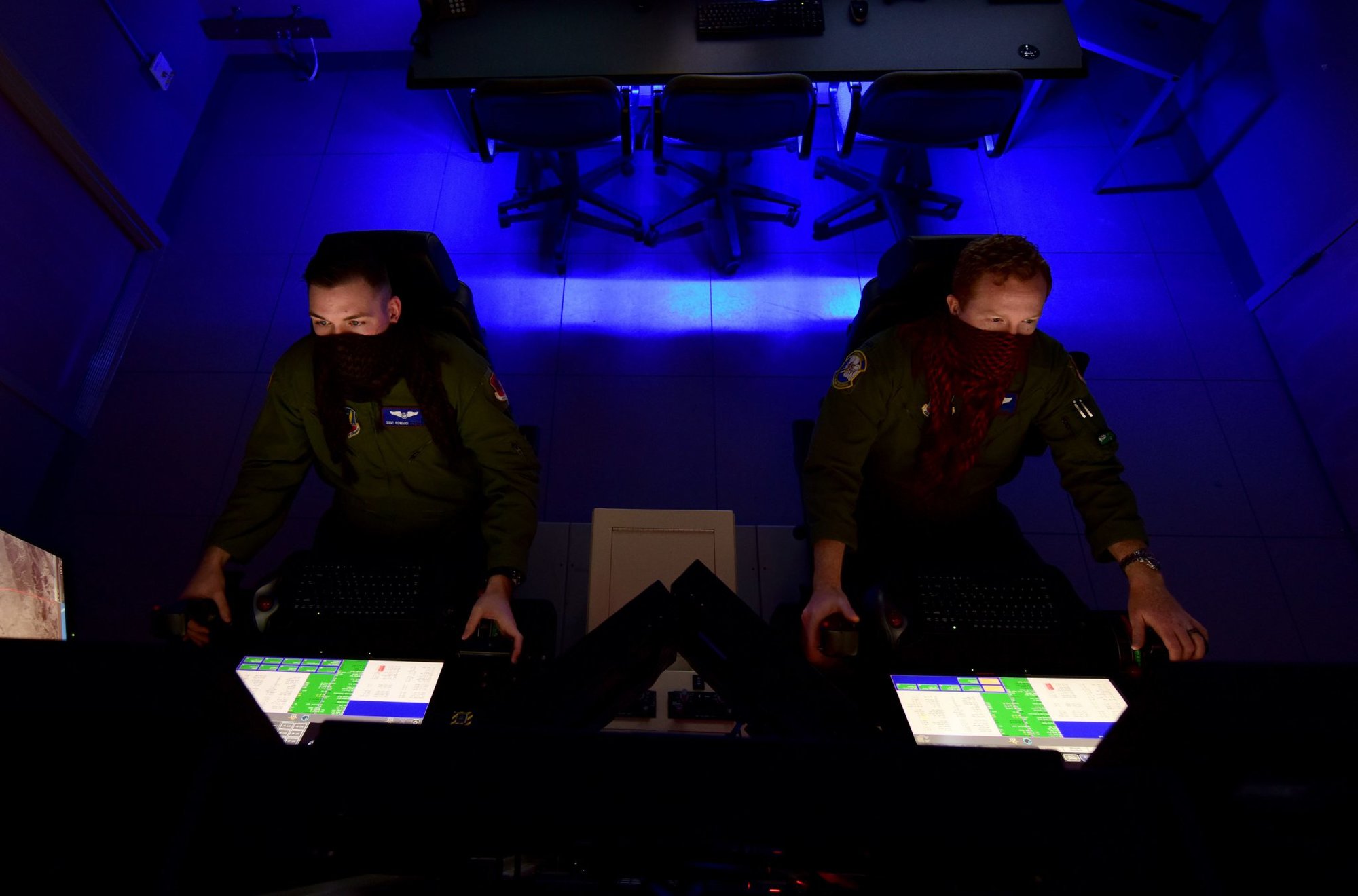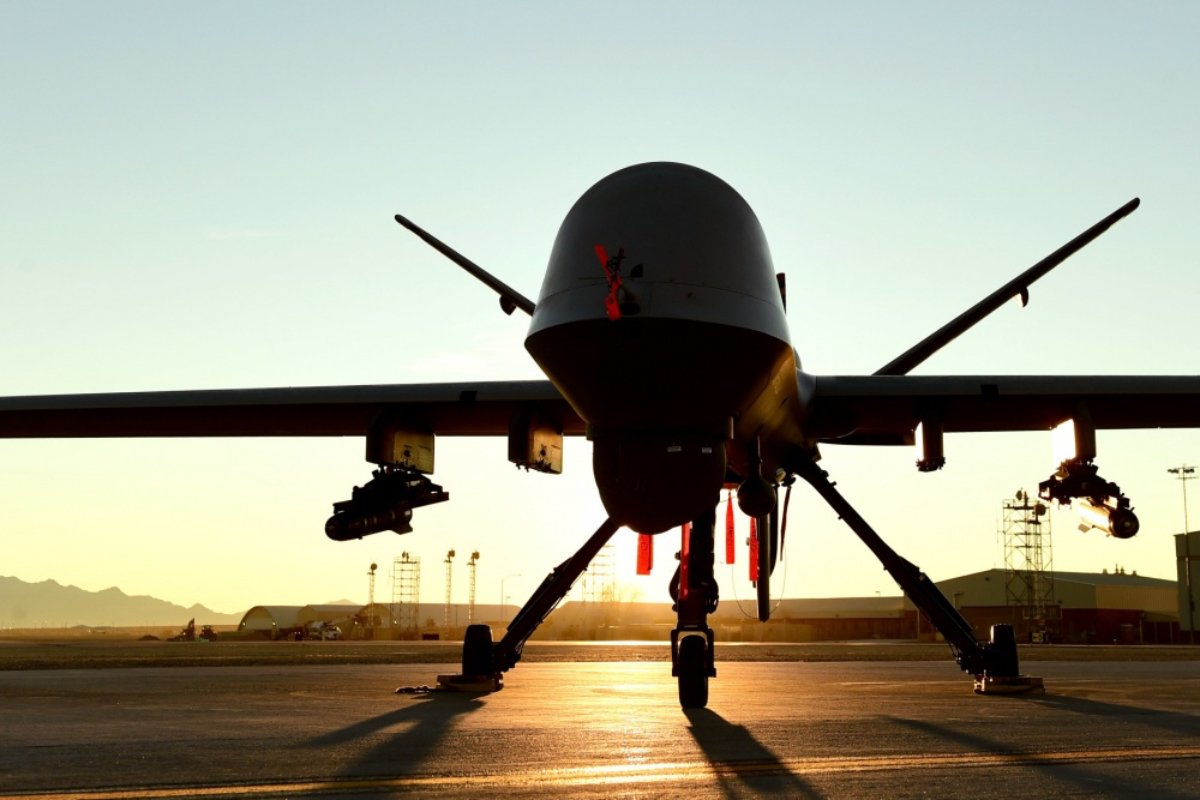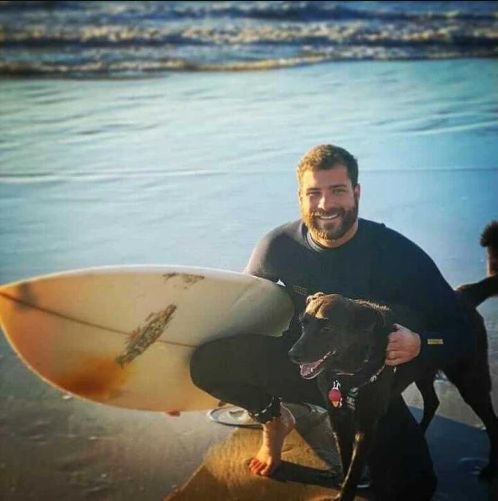‘People’s Lives Are in Your Hands’ — 2 Drone Pilots Analyze the Botched Kabul Airstrike

A drone strike on what the Pentagon believed to be ISIS-K fighters instead killed Zemari Ahmadi and nine members of his family. One of his neighbors stands amid the rubble of the damaged Ahmadi home. The Pentagon admitted the strike had wrongfully targeted Ahmadi on Sept. 17. Photo by Hoshang Hashimi/AFP via Getty Images.
When James Gonzalez heard Gen. Kenneth McKenzie admit in a live news conference that a drone airstrike last month in Kabul had not hit a terrorist but instead had killed 10 civilians — including seven children — he was dumbfounded. Gonzalez spent more than six years in the Air Force as a drone sensor operator. He knows how carefully drone attacks are planned, even secret ones that the public might never hear about.
How did this one fail so miserably with the eyes of the world watching?
“I was pissed off,” Gonzalez said. “Every engagement that I have been on, there are multiple eyes watching what we are doing. And for a group of children to be killed in a strike just kind of blew my mind.”

The Aug. 29 drone airstrike in Kabul was one of the final shots fired by US forces in the Afghan war. To understand how it could have gone so wrong, Coffee or Die Magazine spoke to two drone operators with hundreds of hours of flight or intelligence gathering time, including Gonzalez. A second operator, who continues to work in the field as a civilian, did not want to be identified or quoted directly.
Drone operations are a team effort. While the pilot flies the drone, sensor operators like Gonzalez ensure the craft has eyes on target with various cameras and other devices, feeding that stream to an analyst. The analyst can then relay specific instructions — zoom in on this, get a wider shot of that, follow that moped, and so on.
Gonzalez understood the importance of his job in the Air Force. It’s not a video game, a comparison that he finds cringeworthy.
“A lot of people don’t really understand the pressure. There are people’s lives on the ground on the line,” Gonzalez said. “I wouldn’t believe anyone that says it doesn’t mean anything taking someone’s life. It’s one thing when you see it in the movies or in training, but when it happens in real life it hits you that this is real, people’s lives are in your hands.”
On the morning of Aug. 29, as many as six MQ-9 Reapers were surveilling Kabul, with their attention focused on a car making its way around the city. The team in charge of the drones — a newly stood-up targeting group dubbed the Over the Horizon Strike Cell, based in Qatar — believed they had spotted an imminent threat against US forces.

The pressure on the team was high. Just three days prior, 13 Marines and 169 Afghans had been killed by a suicide bomber outside Hamid Karzai International Airport. The US believed that ISIS-Khorasan, the Afghan chapter of the Islamic State terror group, was responsible for the attacks. According to McKenzie, the commander of US Central Command, the Qatar-based targeters believed the car had arrived at a compound that was a hub for more ISIS-K operations.
Additionally, according to McKenzie, recurring bits of intelligence said a white Toyota Corolla was the vehicle to be used in the next attack. Just before 9 a.m., a vehicle matching that description pulled up to a compound. The targeters watched as the driver shuttled passengers from one location to the next, at times loading and unloading large juglike containers, over the course of the day.
At 4:51 p.m. the car was about 2 miles from the airport, the closest it had been all day, McKenzie said. Fearing the worst, the Qatar team ordered a strike. A Hellfire missile struck the parked vehicle two minutes later.
But within a day, evidence began to build that something had gone terribly wrong.
At first, the US stuck by the strike. A week afterward, Chairman of the Joint Chiefs Gen. Mark Milley called the attack a “righteous strike.”
But by the middle of September, a CENTCOM investigation found that everything about the strike was a mistake. The man targeted and killed was not an ISIS-K terrorist, but a 43-year-old aid worker named Zemari Ahmadi. All others killed were his family members. McKenzie said US investigators had determined that the large jugs that the targeting cell had seen were water jugs and the building suspected to have ISIS-K ties was adjacent to the headquarters of the nonprofit Ahmadi worked for.
A civilian drone pilot contracting for the US military told Coffee or Die the most telling detail was McKenzie’s revelation that targeters had watched Ahmadi for eight hours. In the surveillance world, he said, eight hours isn’t that long of a time.
The drone operator said some targets are watched for weeks to months. Establishing a “pattern of life” comes from observing a person, place, or thing and following the target when needed. Some subjects, he said, are monitored 24 hours a day, seven days a week, without a lapse in surveillance.
In Gonzalez’s opinion, a mistake of this magnitude should never have happened. However, Gonzalez admitted, it’s easy to say all of this in hindsight. Intelligence in Kabul, according to McKenzie, warned of an imminent attack, like the one that had taken nearly 200 lives just three days before.
“This strike was taken in the earnest belief that it would prevent an imminent threat to our forces and the evacuees at the airport,” McKenzie said. “But it was a mistake and I offer my sincere apology. As the combatant commander, I am fully responsible for this strike and its tragic outcome.”
Two different inspectors general inside the Pentagon are now reviewing the strike. A review by the Department of Defense inspector general, announced Friday, Sept. 24, will look at the pre-strike targeting process, the damage assessment, and a civilian casualty review. Additionally, Air Force Inspector General Sami Said has been charged with reviewing the Pentagon’s investigation into the strike, which should be completed by the first week of November. He can recommend accountability measures for the strike as well as any alterations to strike authorities, procedures, and processes, Pentagon press secretary John Kirby said during a Sept. 20 press conference.

The Pentagon said it’s working to reach the remaining members of the Ahmadi family to extend its condolences and offer what is known as an ex gratia payment as an expression of goodwill and official apology.
Neta Crawford, professor of political science at Boston University and project director at Brown University’s Costs of War Project, said that tracking ex gratia payments over time indicates long-standing issues in drone targeting. The payments, she said, mirror US drone policy, which relaxed rules of engagement for airstrikes in Afghanistan in 2017. By 2020, the number of civilians killed had increased by 330%, according to the Costs of War Project.
“There was a dramatic increase in the number of civilians that were killed over the previous years as the United States increased, along with its allies and the Afghan military, the number of airstrikes because we were in negotiations with the Taliban, or hoping to negotiate with the Taliban, and get better terms,” Crawford told Coffee or Die. “The idea was that you squeeze them, put pressure on them.”
The Costs of War Project reported a total of 700 civilians were killed in airstrikes in 2019. Sixty-five payments were issued, according to a Department of Defense report. About half of the payments were for $3,000, but they ranged from $131 to $35,000, and totaled just over $300,000.
When a peace agreement was reached in February 2020, the number of strikes dropped, along with the number of civilian casualties.
With the United States now out of Afghanistan, future air operations in the country will likely decline. However, President Joe Biden has repeatedly said the US retains the right to conduct remote counterterrorism operations, or what the military calls over-the-horizon strikes.
Read Next:

Dustin Jones is a former senior staff writer for Coffee or Die Magazine covering military and intelligence news. Jones served four years in the Marine Corps with tours to Iraq and Afghanistan. He studied journalism at the University of Colorado and Columbia University. He has worked as a reporter in Southwest Montana and at NPR. A New Hampshire native, Dustin currently resides in Southern California.
BRCC and Bad Moon Print Press team up for an exclusive, limited-edition T-shirt design!
BRCC partners with Team Room Design for an exclusive T-shirt release!
Thirty Seconds Out has partnered with BRCC for an exclusive shirt design invoking the God of Winter.
Lucas O'Hara of Grizzly Forge has teamed up with BRCC for a badass, exclusive Shirt Club T-shirt design featuring his most popular knife and tiomahawk.
Coffee or Die sits down with one of the graphic designers behind Black Rifle Coffee's signature look and vibe.
Biden will award the Medal of Honor to a Vietnam War Army helicopter pilot who risked his life to save a reconnaissance team from almost certain death.
Ever wonder how much Jack Mandaville would f*ck sh*t up if he went back in time? The American Revolution didn't even see him coming.
A nearly 200-year-old West Point time capsule that at first appeared to yield little more than dust contains hidden treasure, the US Military Academy said.












